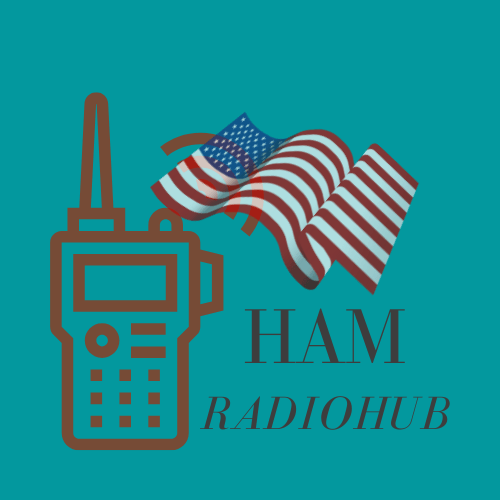Ham radio emergency frequencies: Introduction
Ham radio emergency frequencies are the frequencies that will be used when normal communication channels are down due to natural (or man made) disasters like tornedos, hurricanes, earthquakes, floods etc. Here we shall have a look at different frequencies that you as a ham must be aware of for use during emergency situations.
Ham radio frequencies
Ham radio frequencies can broadly be divided into 03 major categories namely HF (High frequencies), VHF (Very High frequencies) and UHF (Ultra High frequencies).
HF Frequencies
HF frequencies are used for long-range communication and are commonly used by amateur radio operators. The HF band ranges from 3 MHz to 30 MHz.
VHF Frequencies
VHF frequencies are used for short-range communication and are commonly used by emergency responders, such as police, fire, and medical services. The VHF band ranges from 30 MHz to 300 MHz.
UHF Frequencies
UHF frequencies are used for short to medium-range communication and are commonly used by businesses, such as taxis, delivery services, and security services. The UHF band ranges from 300 MHz to 3 GHz.
Ham radio emergency frequencies
Ham radio Emergency frequencies in HF band
The most frequently used frequency in HF for emergency communications is 14.300 Mhz.
It is part of the 20-meter spectrum, and is employed by Hams while doing emergency communication. Ham radio broadcasters working with emergency response teams like those of the Red Cross or local fire departments will also use this frequency. Additional emergency frequencies in the HF band are 7.0-7.3 MHz (40-meter band) and 3.5-4.0 MHz(80-meter band).
Ham radio Emergency frequencies in VHF band
The most commonly used VHF frequency for emergency communication is 146.52 MHz.
This frequency is known as the National Simplex Calling Frequency (NSCF). It is also used for day to day communication between ham radio operators.
During emergency situations, Ham radio operators will use this frequency for establishing communication and coordination between emergency teams. This frequency is also used by search and rescue teams, who monitor it for distress calls.
Ham radio Emergency frequencies in UHF band
The emergency frequency in the UHF band is 446.000 MHz.
However this frequency is part of FRS (Family Radio Service) Band, but it is used by Hams during emergencies while working with ERTs (Emergency Response Teams). The other emergency frequency in UHF band is 420-450 MHz (70-centimeter band).
Other Emergency frequencies
Apart from above, there are several other frequencies that are designated for emergency purposes by different agencies. As a Ham radio operator you must be aware of these frequencies too.
One of the most important emergency frequencies is 121.5 MHz. This frequency is used for emergency distress calls and is monitored by search and rescue teams. In an emergency situation, ham radio operators can use this frequency to call for help and to establish communication with search and rescue teams.
Another important emergency frequency is 243.0 MHz. This frequency is used for military emergency distress calls and is monitored by the military. In an emergency situation involving military personnel, ham radio operators can use this frequency to establish communication with the military.
2182.0 kHz is another important emergency frequency. This frequency is used for marine distress calls and is monitored by the coast guard. In an emergency situation involving boats or ships, ham radio operators can use this frequency to establish communication with the coast guard.
5110.0 kHz, 5371.5 kHz, and 5403.5 kHz are frequencies that are used for emergency communication during disasters, such as earthquakes and hurricanes.
These frequencies are monitored by various agencies and can be used by ham radio operators to establish communication during such emergencies.
Ham radio Emergency frequencies summarized
Here is a short summary to remember all the emergency frequencies for a reference as a Ham.
- 14.3 MHz – HF Band emergency frequency
- 146.52 MHz – VHF Band emergency frequency (National Simplex Calling Frequency)
- 446.00 MHz – UHF Band emergency frequency
- 121.5 MHz: Distress frequency is monitored by search and rescue teams.
- 243.0 MHz: For Military emergency distress calls and is monitored by the military.
- 2182.0 kHz: For Marine distress calls and is monitored by the coast guard.
- 5110.0 kHz, 5371.5 kHz, and 5403.5 kHz: These frequencies are used for emergency communication during disasters, such as earthquakes and hurricanes.
Ham radio emergency frequencies: Conclusion
Keep in your mind that emergency frequencies are only for emergency use and shall be exclusively used for emergency communications in emergency situations and should never be utilized for other non-essential communications. A misuse of emergencies frequencies may result in interference with emergency communications and can have grave consequences.
Also Read: Ham radio frequencies in the USA
Other blog posts from the category:
- Wide Band vs Narrow Band: Which is better for Ham Radio?
- HF Band conditions: A Comprehensive Guide
- HAM radio Frequencies & Bands in the USA: Popular frequencies with chart
- Ham Radio Emergency Frequencies: Must Know During Disasters
- HAM radio General class privileges || Easy Guide USA (Updated 2024)
- HAM radio Technician class privileges || Easy Guide USA (Updated 2024)
- HAM radio Amateur extra class frequencies || Easy Guide USA 2023

